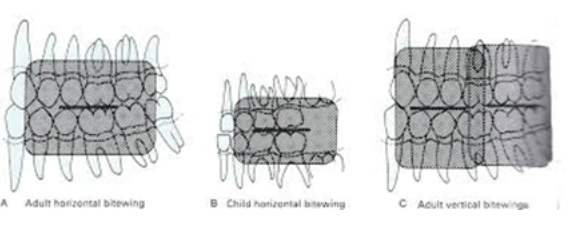X-Ray Basics
Back to: Things Everyone Should Know
Radiographic Need
What language do we use when explaining why there is a need to take x-rays?
On average, we recommend that patients receive cavity detecting x-rays once a year, and an x-ray of their upper and lower jaw bone every 5 years (a pano or CBCT). This is patient dependent and will vary based upon their caries (cavity) risk, periodontal status and other factors. At the end of the day, the frequency of xrays is up to the doctor treating the patient.
The frequency of radiographs is dependent on the individual. However, if the patient has minimal dentistry in their mouth, flosses and brushes regularly, has a low sugar diet and maintains regular cleaning and check-up appointments as a general rule we can take x-rays less frequently. If the patient has a history of numerous crowns and fillings, if the patient has a diet high in sugar, or if the patient does not have a high level of home care (flossing with great irregularity), we recommend taking x-rays more frequently. Patients with dry mouth are much more prone to caries and should have a higher xray frequency. There is no textbook answer. We review every patient based on their individual needs and recommend x-rays accordingly. The one answer we can definitely give; we DO NOT determine how often we need to take x-rays based on how often a patient’s insurance company allows them. It’s based upon the need to diagnose and monitor their conditions.
How much radiation do our patients get exposed to when having x-rays?

At what age do we start taking x-rays on our patients?
As a general rule we try and take 2-4 BW’s on patients starting at age 5. Please use your own professional discretion when determining if your patient is a candidate for the protocol. Ask yourself questions like . . .Is my patient a gagger? Are there open contacts? Am I creating a negative experience by trying to get BW’s? Is this patient a high caries risk? Are posterior contacts closed? Is there clinical evidence of decalcification and/or caries? Am I creating a negative experience by trying to get BW’s? Is this patient a high caries risk due to home-care, diet, and/or familial history?”
We will want to get a pano sometime before age 8 to determine if the patient is missing any permanent teeth. This does not do a great job of diagnosing cavities, so the bitewings are still indicated.
Which X-rays are indicated for New Patients?
As a general rule all new patients 16 and over will have 4 BW’s, a Panoramic film and 6 PA’s. We do Pans as early as age 7. Anterior PAs start at age 14. This should be customized based on the patient’s history. For example if the patient is young, health and has a low caries risk, 4BW’s and a Pan are indicated. If the patient has many dental restorations involving the anterior teeth, anterior PA’s would be indicated. If the patient has a history of periodontal disease.
As a rule we take vertical bitewings and not horizontal on adults to make sure we capture the bone levels.
How often do we take xrays?
As a general rule, we take 4 bitewings and 6 PAs on every patient every year. We will also take a pano every 5 years. Some patients may need more often, some less, but this is our starting place.
All On 4 Patients have a Pano taken annually instead of BWs and PAs. This is sent to insurance. In most cases they have the KClub for All On 4 and therefore there is no charge.
What is a CBCT? Why would a patient need one?
CBCTs are taking for various reasons in our office. Most commonly it is for implant planning. We might also take a CBCT when planning a root canal. Additionally, if we see something on 2D xray we may want to get more detail and will take a CBCT. We can also send a CBCT to a radiologist for review when necessary, but our doctors are well versed in reviewing them in most cases.
Why vertical BW’s over traditional BW’s?
Vertical BW’s are more diagnostic at evaluating horizontal and vertical bone heights on periodontal patients whereas traditional BW’s are better at evaluating interproximal caries.


Is there an x-ray protocol in place for those who refuse to allow us to take x-rays?
We have taken the stance that xrays are necessary for us to do our job. Should be a patient, after counseling and explanation, be unwilling to take the necessary xrays, we will no longer be able to see them as a patient. We respect their right to choose, however, as we are unable to properly diagnose we don’t feel comfortable continuing to treat them. They do not have the option to sign a refusal letter, the courts have ruled patients do not have the education to sign this. We are practicing supervised neglect if we allow them to refuse and we continue to see them. We will allow a patient to refuse up to a maximum of 2 years on bitewings, and 5 years on panos, if approved by the doctor and they have a low disease risk. Procedures, such as root canals, implants, etc absolutely must have xrays to complete them, and xrays will be required for us to do them.
